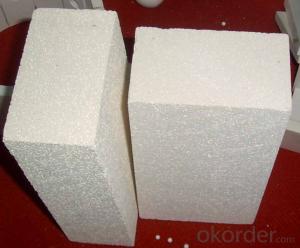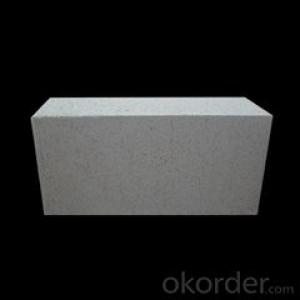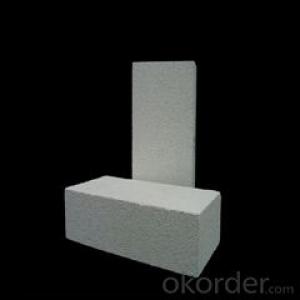Refractory mullite insulating refractory brick JM 89
- Loading Port:
- Shanghai
- Payment Terms:
- TT OR LC
- Min Order Qty:
- 5000 kg
- Supply Capability:
- 10000 kg/month
OKorder Service Pledge
OKorder Financial Service
You Might Also Like
Refractory mullite insulating refractory brick JM 23
Okorder series heat insulation brick
Okorder series thermal insulation brick is an effective, energy saving, low carbon, environmental protection advanced, according to the ASTM standard manufacturing products. Okorder series products are best Li Ning and insulation in all types of industrial furnaces in the metallurgical field, aluminum, petrochemical, electric power and glass ceramic materials. They can be used as part of the working layer of thermal insulation or non - melting. Products have been widely used in the following furnace, achieved satisfactory results.
Application of heat preservation brick
Metallurgical Industry: blast furnace, hot blast furnace, heating furnace, etc..
Petrochemical Industry: ethylene cracking furnace, hydrogen production furnace, primary reformer, heating furnace, etc..
Ceramic industry: roller kiln, kiln, etc..
Glass industry: glass furnace regenerator, etc.
Carbon industry: carbon furnace, etc..
Aluminum electrolysis industry: aluminum reduction cell, etc.
Other industries: tunnel kiln, shuttle kiln, etc..
Advantages of heat insulation brick
Low thermal conductivity: more porosity will bring good thermal insulation effect, energy saving.
High crushing strength: high crushing strength, volume stability.
Low heat storage: small heat storage to absorb more heat, energy-saving effect is obvious.
Gao Chundu: iron, alkali metal impurity content is low.
The precise size: Brick size processing precision, special shape cutting and grinding, accelerate the brickwork.
Insulating brick picture
Common problem solutions
1. What products do you have?
We have all kinds of refractory bricks, refractory casting materials, mortar, cement, ceramic fiber products, etc..
Or you can browse our products to choose what you need.
2. How to control product quality?
With strict quality control system throughout the material selection and production process, we have the quality of refractory materials and ceramic fiber products to meet customer requirements.
From the selection of raw materials, the quality of our control to start. The quality certificate of the raw material is required, each batch of the products are to be tested in the use of the forward line. In the production process, the quality control by the workers, and then each piece of classification, and through the quality supervision and inspection.
3. Can you give me a brief introduction to the application of your product?
My company is mainly engaged in refractories in the steel, cement, glass, ceramics, petrochemical, electric power and other industries.
4. What information do you need if I need you?
In order to select the right products, we will provide us with information, such as the United States, technical data, order quantity, product application, etc..
If you have any questions, please contact us.
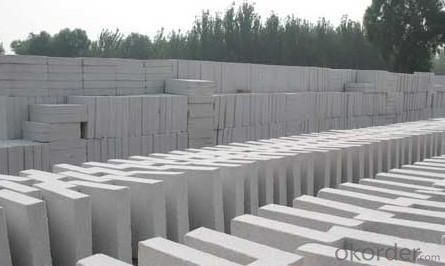
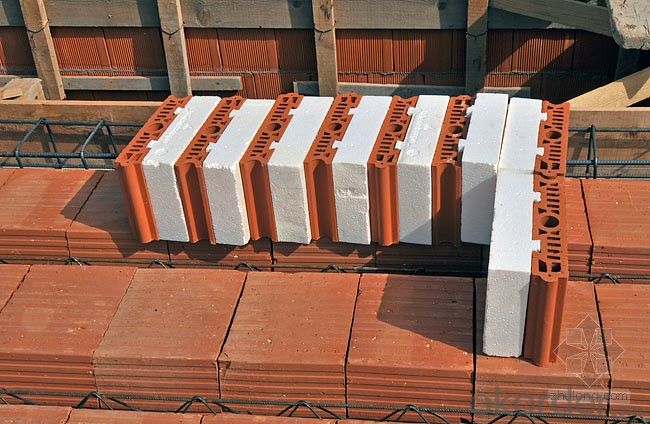
- Q:Are insulating fire bricks resistant to nitrogen oxides?
- Insulating fire bricks are known for their excellent thermal insulation properties and are commonly used in high-temperature applications such as furnaces, kilns, and industrial boilers. While they are highly resistant to heat and can withstand extreme temperatures, their resistance to nitrogen oxides (NOx) may vary depending on the specific composition and manufacturing process of the bricks. Nitrogen oxides are a group of harmful gases that are produced during combustion processes, particularly at high temperatures. These gases can have detrimental effects on human health and the environment. Although insulating fire bricks have a high melting point and can withstand intense heat, they may not provide sufficient resistance to nitrogen oxides on their own. To enhance the resistance of insulating fire bricks to nitrogen oxides, additional measures and coatings may be required. These could include the use of specialized refractory coatings or the incorporation of specific additives during the manufacturing process to create a more chemically resistant brick. It is important to note that the resistance of insulating fire bricks to nitrogen oxides may also depend on the specific application and operating conditions. Different types of nitrogen oxides, such as nitrogen dioxide (NO2) or nitric oxide (NO), may have different effects on the bricks. Therefore, it is recommended to consult the manufacturer or a specialist in refractory materials to determine the suitability of insulating fire bricks in a specific environment where the presence of nitrogen oxides is a concern.
- Q:Are insulating fire bricks suitable for use in the construction of incinerators?
- Insulating fire bricks prove to be a suitable option for constructing incinerators. They are specifically designed to endure high temperatures and possess exceptional insulation properties. Incinerators operate at extremely high temperatures, often surpassing 1000 degrees Celsius, and require materials that can withstand such intense conditions without cracking or deteriorating. Made from lightweight refractory materials like ceramic fibers or lightweight aggregates, insulating fire bricks possess low thermal conductivity. Consequently, they effectively insulate the incinerator, preventing heat escape and maximizing energy efficiency. Moreover, the insulation properties of these bricks aid in maintaining a consistent temperature inside the incinerator, which is crucial for proper combustion and waste disposal. Furthermore, insulating fire bricks exhibit remarkable resistance to thermal shock, enabling them to withstand repeated cycles of heating and cooling without sustaining damage. This attribute is particularly vital in incinerators, where the temperature can rapidly fluctuate during the burning process. The bricks' capacity to endure thermal shock guarantees their durability and longevity in this high-temperature environment. Apart from their insulation and thermal shock resistance, insulating fire bricks offer additional advantages for incinerator construction. They possess a lightweight nature, facilitating easier handling and transportation during the construction phase. Furthermore, they can be readily cut or shaped to fit specific designs or requirements, allowing for flexibility in incinerator construction. In conclusion, insulating fire bricks stand as an ideal choice for incinerator construction due to their resistance to high temperatures, insulation properties, thermal shock resistance, durability, and ease of use. They provide a reliable and efficient solution for containing and maintaining the intense heat generated in incinerators, ensuring the safe and effective disposal of waste.
- Q:Can insulating fire bricks be used in high-temperature kilns and furnaces?
- High-temperature kilns and furnaces can indeed utilize insulating fire bricks. These bricks are specifically designed to endure extreme heat and offer remarkable insulation properties. They consist of lightweight refractory materials, including clay and silica, which possess high melting points and low thermal conductivity. By effectively retaining heat, these bricks decrease energy loss and enhance the efficiency of the kiln or furnace. Moreover, insulating fire bricks exhibit excellent resistance to thermal shock, enabling them to withstand rapid temperature fluctuations without cracking or breaking. Consequently, they are well-suited for high-temperature applications that involve frequent heating and cooling cycles in kilns or furnaces. All in all, insulating fire bricks represent an ideal choice for insulating and safeguarding high-temperature kilns and furnaces.
- Q:Are insulating fire bricks resistant to flame impingement?
- Yes, insulating fire bricks are resistant to flame impingement.
- Q:Outside brick wall, inside brick wall how to return a responsibility?
- In general, the wall of the building and outdoor harsh environment, so the general exterior wall tiles with full ceramic tile surface, then is the kind of uneven, and the appearance of the size deviation of brick is relatively large.
- Q:Can insulating fire bricks be used for pizza ovens?
- Indeed, pizza ovens can make use of insulating fire bricks. These bricks have been specifically crafted to endure extreme heat and offer exceptional insulation, positioning them as an optimal selection for pizza ovens. By possessing low thermal conductivity, insulating fire bricks excel at retaining heat for extended durations, guaranteeing that your pizza is evenly and efficiently cooked. Moreover, their lightweight composition allows for effortless handling and installation in a pizza oven. Ultimately, the utilization of insulating fire bricks within a pizza oven can effectively uphold high temperatures, diminish heat loss, and enhance the overall cooking proficiency.
- Q:Can insulating fire bricks be used in high-temperature kilns for pottery?
- Insulating fire bricks possess the capability to be utilized in kilns for pottery that operate at high temperatures. These bricks are specifically engineered to endure elevated temperatures, typically reaching up to 3000°F (1650°C). Their low thermal conductivity allows them to effectively retain heat and provide insulation within kilns. By incorporating insulating fire bricks into high-temperature kilns, a consistent temperature can be maintained throughout the firing process, ensuring the pottery is adequately heated and cooled. Furthermore, the lightweight nature of these bricks facilitates ease of handling and installation within kilns. In conclusion, insulating fire bricks serve as a suitable option for high-temperature kilns employed in pottery.
- Q:Can insulating fire bricks be used in the construction of lime recovery kilns?
- Insulating fire bricks are indeed applicable for the construction of lime recovery kilns. These kilns, utilized in industrial settings, operate at high temperatures to convert limestone into lime via calcination. Specifically designed to endure elevated temperatures and offer exceptional thermal insulation, insulating fire bricks are composed of lightweight refractory materials, such as clay or silica, and possess low thermal conductivity. Within lime recovery kilns, which can reach temperatures ranging from 900 to 1200 degrees Celsius, insulating fire bricks are suitable for lining the kiln's walls, floors, and roofs. Their superior insulating properties effectively diminish heat loss, thereby enhancing energy efficiency by retaining heat within the kiln. Consequently, this results in reduced fuel consumption and cost savings. Furthermore, insulating fire bricks exhibit excellent resistance to thermal shock, a crucial characteristic in the lime recovery process. These kilns undergo repeated cycles of heating and cooling, necessitating bricks capable of withstanding temperature fluctuations without cracking or disintegrating. Ultimately, insulating fire bricks prove to be a fitting choice for lime recovery kilns due to their capacity to withstand high temperatures, provide thermal insulation, and resist thermal shock.
- Q:Do insulating fire bricks have low thermal conductivity?
- Insulating fire bricks possess a low thermal conductivity, ensuring minimal heat loss and outstanding insulation capabilities. Their composition, usually incorporating lightweight elements like clay, silica, and alumina, accounts for their reduced thermal conductivity. Consequently, these materials are inefficient at transferring heat. Consequently, insulating fire bricks effectively curtail heat transfer, thus preserving elevated temperatures within a structure. Hence, they are an excellent choice for high-temperature insulation needs, exemplified by their suitability for kilns, furnaces, and fireplaces.
- Q:Can insulating fire bricks be used in the construction of incinerators?
- Indeed, insulating fire bricks are applicable for utilization in the construction of incinerators. The paramount significance lies in the exceptional thermal insulation properties possessed by these bricks, which play a vital role in sustaining elevated temperatures and enhancing energy efficiency within the incinerator. The bricks' low thermal conductivity enables them to proficiently retain heat and curtail heat loss. Moreover, their resistance to high temperatures enables them to endure the intense heat generated by the incineration process. Consequently, these bricks emerge as an appropriate preference for lining the walls, floors, and roofs of incinerator chambers, thereby ensuring the incinerator's efficient and secure operation.
1. Manufacturer Overview |
|
|---|---|
| Location | |
| Year Established | |
| Annual Output Value | |
| Main Markets | |
| Company Certifications | |
2. Manufacturer Certificates |
|
|---|---|
| a) Certification Name | |
| Range | |
| Reference | |
| Validity Period | |
3. Manufacturer Capability |
|
|---|---|
| a)Trade Capacity | |
| Nearest Port | |
| Export Percentage | |
| No.of Employees in Trade Department | |
| Language Spoken: | |
| b)Factory Information | |
| Factory Size: | |
| No. of Production Lines | |
| Contract Manufacturing | |
| Product Price Range | |
Send your message to us
Refractory mullite insulating refractory brick JM 89
- Loading Port:
- Shanghai
- Payment Terms:
- TT OR LC
- Min Order Qty:
- 5000 kg
- Supply Capability:
- 10000 kg/month
OKorder Service Pledge
OKorder Financial Service
Similar products
New products
Hot products
Related keywords
